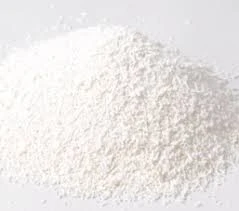
glacial acetic acid
Understanding Glacial Acetic Acid Properties, Uses, and Safety
Glacial acetic acid, also known as ethanoic acid, is a colorless liquid organic compound with a strong, pungent odor. It is widely recognized for its distinct characteristics and versatile applications in various fields, including food production, chemical synthesis, and laboratory experimentation. With the chemical formula CH₃COOH, glacial acetic acid is the pure form of acetic acid, containing no water and typically exhibiting a melting point of about 16.6 degrees Celsius. This unique property gives it the name glacial, as it will crystallize into ice-like structures when cooled.
Properties of Glacial Acetic Acid
One of the most notable properties of glacial acetic acid is its ability to act as both a weak acid and a solvent. It is hygroscopic, meaning it can absorb moisture from the air, which is why it is often stored in tightly sealed containers. In its pure form, glacial acetic acid is a potent acidity, with a pKa value of approximately 4.76, making it significant in various chemical reactions and applications.
Glacial acetic acid can dissolve in water and is also miscible with many organic solvents, including ethanol and ether. This solubility profile allows it to serve as a solvent in numerous industrial and laboratory processes. Moreover, glacial acetic acid has a boiling point of 118 degrees Celsius, making it easier to handle compared to many other organic solvents.
Applications
The applications of glacial acetic acid are extensive and diverse
. One of its primary uses is in the food industry, where it serves as a preservative and flavoring agent. It is a key ingredient in the production of vinegar, contributing to its characteristic taste and preservation qualities. Given its antimicrobial properties, glacial acetic acid helps inhibit the growth of spoilage microorganisms, enhancing food safety.glacial acetic acid

In the chemical industry, glacial acetic acid functions as a precursor for the production of various chemical compounds. It plays a vital role in synthesizing acetates, which are esters derived from acetic acid. These compounds have applications in the manufacturing of paints, plastics, and textiles. Furthermore, glacial acetic acid is essential in the production of acetic anhydride and acetate esters, which have significant roles in pharmaceuticals and agrochemicals.
In laboratories, glacial acetic acid is often utilized as a reagent for various chemical syntheses and analytical procedures. It is commonly used in titration processes to determine the concentration of basic solutions. Additionally, its properties make it an effective solvent for numerous organic compounds, facilitating various synthetic and extraction processes.
Safety and Handling
While glacial acetic acid has many beneficial applications, it is essential to handle it with care due to its corrosive nature. It can cause severe skin and eye irritation upon contact, and inhaling its vapors may lead to respiratory discomfort and distress. Therefore, appropriate personal protective equipment (PPE) should be worn when working with glacial acetic acid, including gloves, goggles, and respiratory protection if needed.
Moreover, it is crucial to store glacial acetic acid in a cool, well-ventilated area, away from heat sources and incompatible materials. Containers should be clearly labeled, and safety data sheets (SDS) should be readily accessible to inform users about any hazards associated with the substance.
Conclusion
In summary, glacial acetic acid is a fundamental chemical with unique properties and a wide range of applications spanning food production, chemical manufacturing, and laboratory research. Its acidity, solvent characteristics, and ability to act as a precursor for various compounds make it indispensable in multiple industries. However, recognizing its potential hazards and implementing appropriate safety measures is essential to ensure the well-being of those who work with it. Understanding glacial acetic acid, its uses, and safety protocols equips individuals and industries to harness its benefits responsibly.
-
nitrile-rubber-honoring-strict-production-standardsNewsAug.22,2025
-
aspartame-ingredients-honoring-food-safety-valuesNewsAug.22,2025
-
fertilizer-for-balanced-plant-nutritionNewsAug.22,2025
-
cyanide-gold-processing-with-high-purity-additivesNewsAug.22,2025
-
formic-acid-in-textile-dyeing-applicationsNewsAug.22,2025
-
aluminum-hydroxide-gel-in-skincare-productsNewsAug.22,2025
-
Regulatory Compliance for Global Mining Chemicals UseNewsAug.12,2025
Hebei Tenger Chemical Technology Co., Ltd. focuses on the chemical industry and is committed to the export service of chemical raw materials.
-

view more DiethanolisopropanolamineIn the ever-growing field of chemical solutions, diethanolisopropanolamine (DEIPA) stands out as a versatile and important compound. Due to its unique chemical structure and properties, DEIPA is of interest to various industries including construction, personal care, and agriculture. -

view more TriisopropanolamineTriisopropanolamine (TIPA) alkanol amine substance, is a kind of alcohol amine compound with amino and alcohol hydroxyl, and because of its molecules contains both amino and hydroxyl. -

view more Tetramethyl Thiuram DisulfideTetramethyl thiuram disulfide, also known as TMTD, is a white to light-yellow powder with a distinct sulfur-like odor. It is soluble in organic solvents such as benzene, acetone, and ethyl acetate, making it highly versatile for use in different formulations. TMTD is known for its excellent vulcanization acceleration properties, which makes it a key ingredient in the production of rubber products. Additionally, it acts as an effective fungicide and bactericide, making it valuable in agricultural applications. Its high purity and stability ensure consistent performance, making it a preferred choice for manufacturers across various industries.





